You’re tasked with building and leading a high-performance revenue team. You’ve got the ambition, but where do you start?
This article is your roadmap. It’s packed with insights on understanding the concept, essential elements to consider, leadership strategies to adopt, challenges you’ll face and how to overcome them.
We’ll also highlight successful case studies and future trends.
Dive in, because it’s time for you to lead a top-performing revenue team!
Table of Contents
ToggleKey Takeaways
- High-performance revenue teams consist of marketing, sales, and customer service professionals who collaborate and focus on the end-to-end customer journey.
- Strategically planning team structure and roles, matching skills with tasks, and investing in continuous training are essential for building high-performance revenue teams.
- Choosing the most suitable leadership style, such as autocratic, democratic, or transformational, based on team dynamics and goals is crucial for effective leadership.
- Promoting collaboration, establishing clear goals, ensuring accountability, and recognizing team achievements are key factors in performance-oriented team building.
Understanding the Concept of High-Performance Revenue Teams
It’s crucial to comprehend what high-performance revenue teams are if you’re aiming for superior business results. These groups aren’t just about making sales; they’re strategic units that drive the financial success of your company.
A high-performance revenue team consists of marketing, sales, and customer service professionals working in harmony towards shared goals. They don’t operate in silos; instead, they share insights, collaborate on strategies, and focus on the end-to-end customer journey.
What differentiates these teams is their relentless pursuit of excellence. They strive for constant improvement, using metrics and data analysis to monitor their performance and make informed decisions. Every activity is measured against how it contributes to revenue generation – from lead acquisition to customer retention.
Furthermore, such teams exhibit a deep understanding of the market and customers’ needs. This knowledge allows them to forecast trends accurately, adapt quickly to changes, and deliver solutions that resonate with their target audience.
Remember: building a high-performance revenue team requires time, effort, and resources – there are no shortcuts. But when you’ve got one functioning at its peak potential, you’ll see your business grow exponentially as your profits soar. It’s an investment worth every penny!
Essential Elements for Building High-Performance Revenue Teams
Creating a top-tier sales force requires several key components. Strategic planning, effective communication, and continuous training are all necessary for success.
To start, you must strategically plan your team structure and roles. This involves identifying the skills necessary for each role and matching them with the right individuals. It’s not just about filling positions; it’s about aligning skill sets with tasks for optimal performance.
Effective communication is another vital element. You need to clearly articulate your business goals and how each team member contributes towards achieving them. Transparency fosters trust and motivates employees to work harder because they understand their impact on the company’s success.
Continuous training can’t be overlooked either. The world of sales is continuously evolving, so your team should too. Invest in regular training programs that keep your staff updated on industry trends and best practices.
Leadership Strategies for High-Performance Revenue Teams
You’re about to delve into the intricacies of effective leadership styles, performance-oriented team building, and nurturing team dynamics – all critical cornerstones for constructing high-performance revenue teams.
This exploration will not only underscore the nuances in leadership approaches that can markedly invigorate team productivity but also highlight how a performance-focused environment can entice individual contributions.
Plus, you’ll discover how fostering healthy team dynamics isn’t just nice-to-have; it’s an essential ingredient in your recipe for success.
Effective Leadership Styles
Understanding various leadership styles can significantly enhance your capability to build a high-performance revenue team. You’ve got so many options, but remember – it’s not one-size-fits-all. It’s all about analyzing the dynamics of your team and choosing what fits best.
The autocratic style, for instance, may be effective during crisis management when quick decisions are crucial. But it might stifle creativity in the long run.
On the other hand, the democratic style fosters an environment of collaboration and innovation by incorporating everyone’s input into decision-making processes. However, it could slow down decision making if there’s too much debate.
The transformational leader inspires and motivates through their vision and charisma but they must also focus on practical details to ensure progress.
Choosing wisely is key here; you’re molding the future of your company after all!
Performance-Oriented Team Building
In order to foster a performance-oriented atmosphere, it’s crucial that you focus on promoting collaboration and open communication among your team members. Encourage them to share ideas and contribute their unique perspectives. This not only breaks down barriers but also drives innovation.
Next, establish clear goals. It’s fundamental for everyone on the team to understand what they’re working towards. With a common objective, your team will feel more unified and motivated to perform at their best.
Don’t forget about accountability; it’s integral in high-performing teams. Make sure each member understands their role and responsibilities, ensuring no task falls by the wayside.
Lastly, recognize achievements—nothing propels performance like feeling valued. Whether big or small, celebrate successes together as a team.
Nurturing Team Dynamics
Fostering positive team dynamics isn’t just about the big things, but it’s also about paying attention to the small interactions that can make or break your team’s morale and productivity. It’s crucial you observe and address any issues promptly, as they can quickly escalate if left unchecked.
You must invite openness and transparency within your team. Encourage members to speak up when there’s a problem, instead of letting issues fester in silence. You’ll find this approach not only resolves conflicts faster but also strengthens trust and collaboration.
Furthermore, don’t underestimate the power of praise. Recognize individual contributions regularly – it boosts morale and motivates your team to perform better.
Overcoming Challenges in Leading High-Performance Revenue Teams
You’ll encounter numerous hurdles when leading high-performance revenue teams, but overcoming these can lead to significant growth and success.
It’s not just about building a team with the right skills; it’s also about fostering an environment where these talents can shine and thrive.
One of the main challenges you might face is keeping everyone aligned toward common goals. High achievers often have their own strategies for reaching targets which may create friction within the team if they’re not appropriately managed. You’ve got to balance individual ambition with collective progress, ensuring everyone understands their role in achieving shared objectives.
Then there’s the issue of performance pressure. High-performance teams are expected to deliver superior results consistently, which can be stressful. How do you keep your team motivated amid this intense pressure? It’s essential that you cultivate a supportive culture, where mistakes aren’t viewed as fatal flaws but as opportunities for learning and improvement.
Finally, there’s the challenge of maintaining competitive advantage while adhering to ethical standards. You need to ensure your high-performing team operates within appropriate boundaries without compromising their ability to outperform rivals.
Overcoming these challenges isn’t easy – it requires insight, patience, and strategic thinking. But once achieved, it paves the road towards sustainable success.
Case Studies: Successful High-Performance Revenue Teams
You’re about to delve into some of the most successful high-performance revenue teams in the business world.
You’ll explore Google’s revenue team, understanding how their success is molded by unique strategies and effective execution.
Additionally, you’ll dissect Salesforce’s revenue team strategy for key insights and examine Netflix’s approach to maintaining a high-performance culture; each case offering valuable lessons on driving growth and performance in your own organization.
Google’s Revenue Team Success
Google’s revenue team has indeed set a high bar in the industry. You’ve likely seen how their strategic moves have led to substantial growth over the years. They haven’t achieved this by chance, but through a well-structured, data-driven approach that optimizes sales and marketing efforts.
When you delve deeper, you’ll find out it’s about their unique blend of talent management, technology adoption, and innovative thinking. Their team isn’t just skilled; they’re adaptable and always ready for change. Google’s constant investment in new technologies enhances efficiency while fostering creativity among the team members.
Take note: It’s not only about having a great product or service but also building an effective revenue team around it. That’s part of Google’s success secret; consider applying it to your business too.
Salesforce: Revenue Team Strategy
Just like Google, Salesforce has its own unique approach towards managing their sales team effectively. They’ve crafted a strategy that promotes cross-department collaboration and knowledge sharing, which is crucial in solving complex business solutions.
You’ll notice that Salesforce focuses heavily on training and development. This ensures the team stays updated with industry trends and acquires necessary skills to drive revenue growth. Their use of modern technology also sets them apart. By leveraging AI-based tools like Einstein Analytics, they’re able to make data-driven decisions that directly impact sales performance.
Salesforce’s approach isn’t just about improving numbers; it’s centered on building strong relationships both internally and externally. It’s a model you can study if you’re looking to optimize your own revenue team’s efficiency and effectiveness.
Netflix’s High-Performance Approach
Netflix’s strategy, on the other hand, focuses heavily on fostering a culture of excellence and transparency among its employees. You’ll notice that Netflix places unwavering emphasis on high-performance. They aren’t just interested in creating revenue teams; they’re committed to building ones that consistently deliver outstanding results.
Transparency is key in their approach. You’ll find that information isn’t hoarded at the top but shared across all levels, promoting trust and accountability. They’ve also instituted a ‘keeper test’ to ensure only top performers stay onboard. This might seem harsh, but it keeps their teams lean, agile and highly motivated.
In short, Netflix’s rigorous dedication to performance and transparency sets them apart. It’s not just about making money; it’s about setting new standards of excellence.
Future Trends in High-Performance Revenue Teams Management
Looking ahead, we’re likely to see a rise in Artificial Intelligence’s role in managing high-performance revenue teams. You’ll find AI tools becoming more sophisticated and integrated into daily operations, streamlining everything from lead generation to customer engagement statistics. Imagine having an AI tool that can accurately predict a client’s buying behavior based on their past interactions or using data analytics to optimize your team’s sales strategies.
AI won’t just be about automation; it will also provide you with deeper insights into your team’s performance. It might offer real-time feedback, guiding your team members towards more effective strategies and ensuring that they’re consistently hitting their targets. This creates an environment of continuous learning and improvement, vital for any high-performance revenue team.
However, as much as AI can aid in efficiency and accuracy, remember it doesn’t replace the human touch needed in decision-making processes. You’ll need to balance these technological advancements with strong leadership skills – setting clear goals, fostering open communication, and encouraging innovation among your team members.



